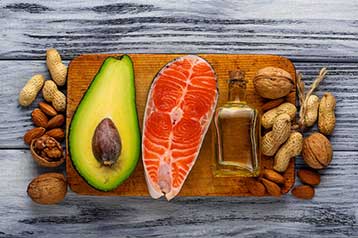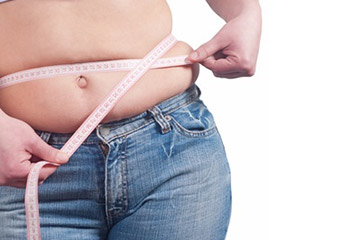Iron Deficiency Prevention
What can I do to prevent iron deficiency?
In general, you can eat a healthful diet that includes good sources of iron. A healthful diet includes fruits, vegetables, whole grains, fat free or nonfat milk and milk products, lean meats, fish, dry beans, eggs, nuts, and is low in saturated fat, trans fats, cholesterol, salt, and added sugars.
In addition to a healthful diet that includes good sources of iron, you can also eat foods that help your body absorb iron better. For example, you can eat a fruit or vegetable that is a good source of vitamin C (see table on Dietary Sources of vitamin C) with a food or meal that contains non-heme iron (see table below for Dietary Sources of Iron).
Vitamin C helps your body absorb the non-heme iron foods you eat, especially when the food containing non-heme iron and the vitamin-C rich food are eaten at the same meal.
The following recommendations are for specific groups who are at greater risk for iron deficiency.
Babies
- If possible, breastfeed your baby for at least 12 months and starting at 4 to 6 months of age, give your baby plain, iron-fortified infant cereal and/or pureed meat. Just two or more servings a day can meet a baby's iron needs at this age. Meats should be home prepared or commercially prepared plain pureed (chopped until smooth in a blender) meats.
- When your baby is about 6 months of age, include a feeding per day of foods rich in vitamin C with foods that are rich in non-heme iron to improve iron absorption.
- If you can't breastfeed, use iron-fortified formula.
- Don't give low-iron milks (e.g. cow's milk, goat's milk, and soy milk) until your baby is at least 12 months old.
- If your baby was born early or small, talk to your doctor about giving iron drops to your baby.
- If your baby can't get two or more servings per day of iron rich foods (such as iron-fortified cereal or pureed meats), talk to your doctor about giving iron drops to your baby.
Young children (aged 1–5 years)
- After your child is one year old, give no more than three 8 ounce servings of whole cow, goat, or soy milk per day. After your child is 2 years old, low fat or nonfat milks should be used in place of whole milks. Vitamin D-fortified milk is a good source of calcium and vitamin D, but not iron.
- Give your child a diet with iron-rich foods such as iron-fortified breads and iron-fortified cereals and lean meats. See Dietary Sources of Iron
- Include fruits, vegetables or juices that are rich in vitamin C. Vitamin C helps your child absorb non-heme iron especially when the food that is a source of non-heme iron and the vitamin C-rich food are eaten at the same meal. See Dietary Sources of Vitamin C.
Adolescent girls and women of childbearing age
- Eat iron-rich foods. See Dietary Sources of Iron.
- Eat foods that are vitamin C sources. Vitamin C helps your body absorb non-heme iron especially when the food that is a source of non-heme iron and the vitamin C-rich food are eaten at the same meal. See Dietary Sources of Vitamin C.
- Eat lean red meats, poultry, and fish. The iron in these foods is easier for your body to absorb than the iron in plant foods.
Pregnant women
- Eat iron-rich foods. See Dietary Sources of Iron.
- Eat foods that are vitamin C sources. Vitamin C helps your body absorb non-heme iron especially when the food that is a source of non-heme iron and the vitamin-C rich food are eaten at the same meal. See Dietary Sources of Vitamin C below.
- Eat lean red meats, poultry, and fish. The iron in these foods is easier for your body to absorb than the iron in plant foods.
- Talk to your doctor about taking an iron supplement.
How much iron do I need?
If you have already been diagnosed with iron deficiency, talk to your doctor or healthcare provider about treatment. For healthy individuals, the Recommended Dietary Allowance (RDA) for iron is listed in the following table.
| Recommended Dietary Allowance (RDA) for iron by age and sex. | ||
|---|---|---|
| Age/Group | Life Stage | Iron (mg/day) |
| Infants | 0–6 months | 0.27* |
| 7–12 months | 11 | |
| Children | 1–3 years | 7 |
| 4–8 years | 10 | |
| Males | 9–13 years | 8 |
| 14–18 years | 11 | |
| 19–30 years | 8 | |
| 31–50 years | 8 | |
| 51–70 years | 8 | |
| >70 years | 8 | |
| Females | 9–13 years | 8 |
| 14–18 years | 15 | |
| 19–30 years | 18 | |
| 31–50 years | 18 | |
| 51–70 years | 8 | |
| >70 years | 8 | |
| Pregnant Women | 14–18 years | 27 |
| 19–30 years | 27 | |
| 31–50 years | 27 | |
| Lactating Women | 14–18 years | 10 |
| 19–30 years | 9 | |
| 31–50 years | 9 | |
*This value is an Adequate Intake (AI) value. AI is used when there is not enough information known to set a Recommended Dietary Allowance (RDA).
Related articles:
.
Autor: Dr. Carlos Muñoz Retana
Actualizado: 4 de Enero, 2019






